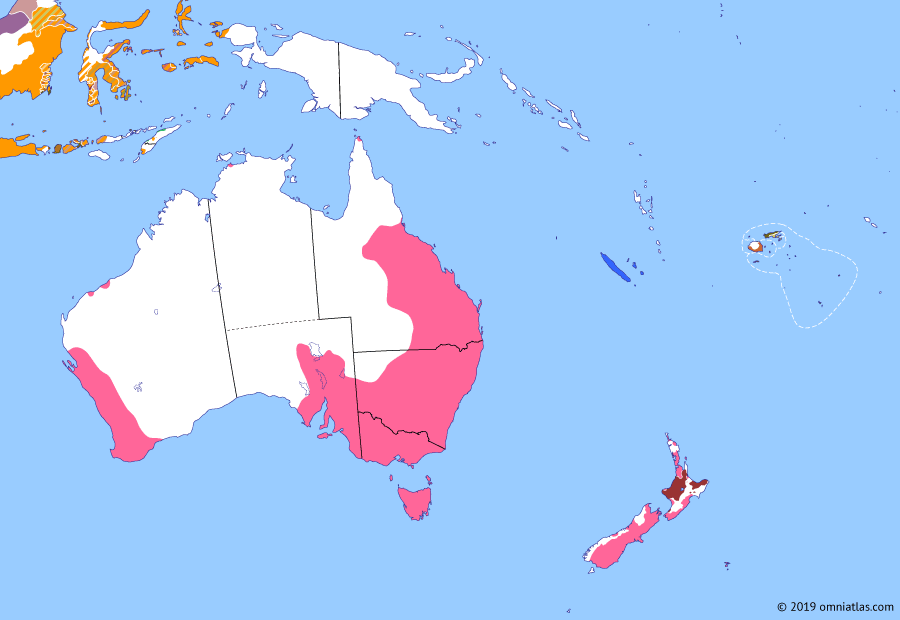Australasia 1864: Invasion of the Waikato

21 June 1864
21 Jun 1864
Invasion of the Waikato
12 Mar 1862 Crossing the Outback
21 Jun 1864 Invasion of the Waikato
8 May 1865 Fijian Confederacy
10 Nov 1868 ‘Hauhau’ Wars
22 Aug 1872 Australian Overland Telegraph Line
13 Aug 1877 British Western Pacific Territories
6 Nov 1884 New Guinea Protectorates
20 Aug 1889 Samoan Crisis
15 Mar 1893 Partition of the Solomon Islands
14 Mar 1899 Second Samoan Civil War
In 1858 a Māori King was proclaimed in the Waikato, with many tribes from across New Zealand pledging support. Seeing this King Movement as a threat to colonial rule, the British invaded the Waikato in 1863–64, driving the King and his Kingite supporters into the interior of the North Island.